#panstarrs
Explore tagged Tumblr posts
Text

Rocky Comet
10 notes
·
View notes
Photo
Comet Panstarrs -- Seen from Queenstown, New Zealand (March 2, 2013)
AP Photo/spaceweather.com, Minoru Yoneto

421K notes
·
View notes
Text
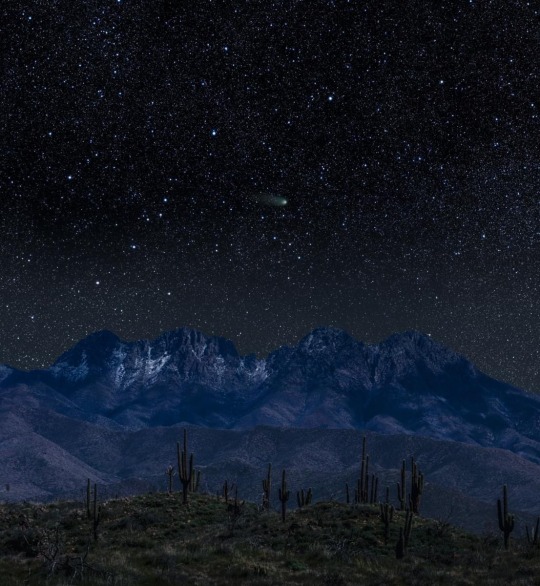
March 21, 2024. 4 Peaks, east of Phoenix, Arizona. Comet c/2021 S3 (PANSTARRS). This comet only comes every 1,751,372 years, ..currently 121,267,871 miles away and heading back out to space.
Comet: Esprit 80mm, QHY268C, 2min X 47 = 1hr 34m integration.
Foreground: Canon 6D, 214mm, f10, ISO 100, 1,000 sec.
121 notes
·
View notes
Text

Planetary scientists confirm new main-belt comet
A mysterious object discovered in the main asteroid belt in 2021 was determined to be a main-belt comet by Planetary Science Institute Senior Scientist Henry Hsieh, Scott Sheppard of the Carnegie Institution for Science and Audrey Thirouin of Lowell Observatory.
Main-belt comets are icy objects found in the asteroid belt between Mars and Jupiter—rather than the cold outer solar system where icy bodies are typically expected. They sport comet-like features, like tails extending away from the sun or fuzzy clouds as the sun's heat vaporizes their ice. They were first discovered in 2006 at the University of Hawaii by Hsieh and his then-doctoral advisor, David Jewitt.
Main-belt comets belong to a larger group of solar system objects known as active asteroids, which look like comets, but have asteroid-like orbits in the warm inner solar system. This larger group includes objects whose clouds and tails are made of ejected dust produced after an impact or as they quickly rotate, rather than just those that eject dust due to vaporized ice. Both main-belt comets and active asteroids in general are still relatively rare, but scientists are discovering them at a growing clip.
Hsieh and his colleagues observed active asteroid 456P/PANSTARRS twice using the Magellan Baade Telescope and Lowell Discovery Telescope in October 2024 to establish its status as the 14th confirmed main-belt comet. They published their findings in Research Notes of the AAS.
"This object is not just an asteroid that experienced a one-off event that caused it to show activity one time, but is an inherently active, icy body similar to other comets from the outer solar system," Hsieh said.
If 456P/PANSTARRS's activity were due to something other than ice vaporization, then its tail would be expected to appear only once randomly, and not repeatedly appear when it was close to the sun. An icy object, on the other hand, heats up every time it approaches the sun, and the vaporized ice drags dust out along with it. When the object moves farther from the sun and cools, the activity stops.
Observations of repeated dust ejection activity during close approaches to the sun are currently considered the best and most reliable way to identify main-belt comets.
"There are still very few confirmed main-belt comets known," Hsieh said. "We want to build up the population so we can get a clearer idea of what their broader properties are—such as their sizes, activity duration and distribution within the asteroid belt, for example—so that they can be better used to trace ice in the solar system in general."
2 notes
·
View notes
Link
China’s Chang’e 7 lunar lander mission will feature a flag fluttering in the vacuum of space. A CNSA flag flying on the Moon. Credit: CGTN News screenshot. It’s one of the most often asked questions I get, while showing off the Moon to the public. “Can you see the flag the astronauts left there?” This then leads to a discussion on how far the Moon is, versus the difficulty of seeing a 1.5 by 0.9 meter flag at such a distance. My ‘scope is good, but not that good. During the U.S. Apollo program, six crewed missions landed on the Moon starting with Apollo 11 in 1969, leaving a like number of flags. Now, China recently announced that one more flag will join the collection in late 2026, when Chang’e 7 heads to the Moon. Flying a Flag on the Moon The curious report comes out of the Deep Space Exploration Laboratory (DSEL) via the China Media Group. The free standing flag will actually be designed to ‘flap’ on the airless surface of the Moon. The idea was proposed by elementary school students out of Changsha in China’s Hunan Province. The flag will have closed-loop wires embedded in the fabric, and ‘flap’ using magnetic currents and electromagnetic interactions to create a waving motion. Coming soon: A ‘flapping flag’ on the Moon… “This initiative is intended to enhance young students’ understanding of China’s space program and inspire their interest in pursuing space exploration in the future,” says Zhang Tianzhu (DSEL/Institute of Technology) in a recent press release. A Race to the (Lunar) Pole Chang’e 7 is designed to carry out some serious science as well. The mission is destined to land near the edge of Shackleton Crater in the Moon’s south polar region. The permanently shadowed floor of the crater is of special interest, as it is suspected to contain water ice. The mission will also carry six instruments from six nations, including a small rover and an observatory built and operated by the International Lunar Observatory Association (ILOA) based out of Hawai’i. Shackleton crater was one of the candidate landing sites for NASA’s now canceled VIPER rover. Potential landing sites of interest clustered around the lunar south pole region. Credit: NASA/LRO While the merits of having a flag flap in space may be limited, it should be an interesting bit of public outreach for the CNSA. Curiously, some of the screen captures show a CNSA logo (not a Chinese national flag) free-standing on a tall pole, meaning a bit of effort and planning will have to be taken to plant it in the lunar soil. Astronaut Buzz Aldrin and the U.S. Flag on the Moon during Apollo 11. Credit: NASA China in Space 2025 This year and next are busy ones for China’s space agency. The agency plans on launching its first ever asteroid and comet sample return mission Tianwen-2 this May, headed to asteroid Kamo’ oalewa (itself thought to be a fragment of the Moon) then onward to Comet 311P/PanSTARRS. Then, China has plans to launch its own space telescope Xuntian in early 2026. This telescope will station-keep with the crewed Tiangong space station for access for upgrade and maintenance. The U.S. Flag mounted on the New Horizons mission. Credit: NASA/JPL Putting flags in space and on the Moon isn’t a new thing. Generally, engineers mount the flags on the spacecraft itself. The U.S. flag placed on NASA’s New Horizons spacecraft is headed out of the solar system. This symbol may well outlive the U.S. and humanity itself. U.S. flags planted by Apollo astronauts on the Moon have most likely been bleached white by intense ultraviolet solar radiation, though images by NASA’s Lunar Reconnaissance Orbiter in low lunar orbit confirm that at least as few are still standing. Still standing: the Apollo 17 landing site, including the flag. Credit: NASA/LRO But the award for the very first flag (or at least symbol) on the lunar surface goes to Luna 2, the first mission to hit the Moon in 1959 which carried a pennant of the now defunct Soviet Union: A replica of the sphere onboard Luna 2, which impacted the Moon. Credit: Patrick Pelletier/Wikimedia Commons Attribution-Share Alike 3.0 Unported license. It will be a curious moment (and most likely, an internet meme) to see a flag ‘flap’ next year on the surface of the Moon. The post China’s Chang’e 7 Will Include a Flag That Will ‘Flap’ on the Moon appeared first on Universe Today.
0 notes
Photo

456P/PANSTARRS: New Rare Comet Confirmed In The Main Asteroid Belt
0 notes
Text
Night sky highlights for April 2024
Check out the night sky this month, April 2024. Here are videos highlighting the top sights to observe. ** What's Up: April 2024 Skywatching Tips from NASA - NASA JPL What are some skywatching highlights in April 2024? Catch Mars and Saturn rising, and Jupiter hangs out with Comet 12P. Plus NASA has you covered for the total eclipse whether you're headed to totality or watching from afar. 0:00 Intro 0:14 Moon & planet highlights 0:57 Comet 12p/Pons-Brooks 1:38 Total solar eclipse 3:45 April Moon phases Additional information about topics covered in this episode of What's Up, along with still images from the video, and the video transcript, are available at https://solarsystem.nasa.gov/skywatch.... — Additional Resources — NASA's Solar Eclipse hub: https://science.nasa.gov/eclipses/fut... Find events & clubs: NASA's Night Sky Network: https://science.nasa.gov/skywatching/... Skywatching resources from NASA: https://science.nasa.gov/skywatching https://youtu.be/hm__8GGxJpA ** Tonight's Sky: April 2024 - Space Telescope Science Institute - Tonight's Sky Clear April nights are filled with starry creatures. Near the Big Dipper, you will find several interesting binary stars. You can also spot galaxies like the Pinwheel Galaxy, M82, and M96—the last of which is an asymmetric galaxy that may have been gravitationally disrupted by encounters with its neighbors. Keep watching for space-based views of these celestial objects. About this Series ... “Tonight’s Sky” is a monthly video of constellations you can observe in the night sky. The series is produced by the Space Telescope Science Institute, home of science operations for the Hubble Space Telescope, in partnership with NASA’s Universe of Learning. This is a recurring show, and you can find more episodes—and other astronomy videos—at https://hubblesite.org/resource-gallery/tonights-sky. https://youtu.be/LuA8Qs5rDwI ** What to see in the night sky: April 2024 - BBC Sky at Night Magazine Pete Lawrence and Paul Abel reveal what's in the night sky this month, including Comet 12P/Pons Brooks, the Moon and the Pleiades, the April 8 solar eclipse, Lyrid Meteor Shower and the Plough asterism. 00:00 Intro 00:18 Inner planets 02:23 Outer planets 07:31 Comet 12P/Pons-Brooks 10:54 Solar eclipse 12:38 Moon and the Pleiades 13:16 Jewelled Handle 13:48 Lyrid Meteor Shower 14:22 Summer Triangle 15:20 Comet C/2021 S3 PANSTARRS 16:30 The Plough 21:03 Deep-sky objects https://youtu.be/TUWWa9wFrHI ** Sky & Telescope's Sky Tour Podcast - April 2024 - Sky & Telescope Youtube https://youtu.be/mTI7hKsZMeM See also - Sky Tour Astronomy Podcast: Upcoming Celestial Events - Sky & Telescope - This Week's Sky at a Glance, March 29 – April 7 - Sky & Telescope ** Night Sky Notebook April 2024- Peter Detterline https://youtu.be/2w0qoX96H-E ** See also: - The Night Sky in April 2024 | Day By Day Astronomy Events - What's in the Sky This Month? | April 2024 | High Point Scientific - April 2024 Night Sky Calendar | Voyageurs Conservancy - Tonight's Night Sky: April 2024 | A Total Solar Eclipse, Visible Planets, Bright Stars, Astronomy | Almanac.com - Astrophotography in April 2024: what to shoot in the night sky this coming month | Digital Camera World - Meteor shower guide 2024: Up next the April Lyrids | EarthSky.org === Amazon Ads === Celestron 70mm Travel Scope Portable Refractor Telescope Fully-Coated Glass Optics Ideal Telescope for Beginners BONUS Astronomy Software Package == Stellaris: People of the Stars Read the full article
0 notes
Text
Março de 2024
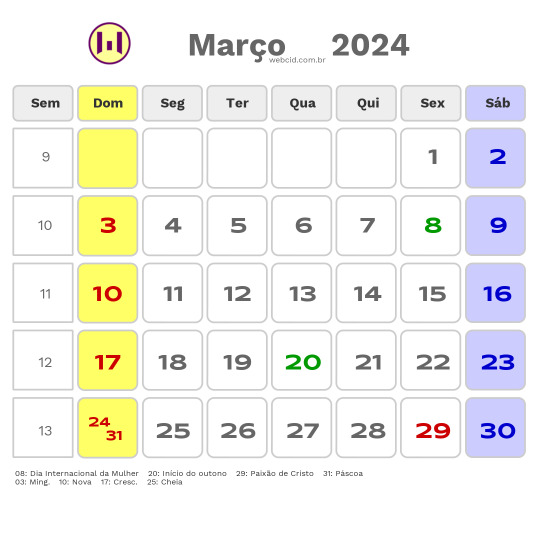
01: A Lua passa a 0°24' de Antares (mag 1.1) 01: O cometa C/2021 S3 (PANSTARRS) (mag 9.9) atinge seu brilho máximo 03: Lua Quarto Minguante 08: A Lua passa a 3°30' de Marte (mag 1.2), 3°18' de Vênus (mag -3.8) 08: Marte em conjunção com a fina Lua Minguante 08: Vênus em conjunção com a fina Lua Minguante 10: Lua Nova 10: Mercúrio em conjunção com a finíssima Lua Crescente 10: Ocultação lunar de Netuno (mag 7.9) 13: Júpiter em conjunção com a fina Lua Crescente 14: A Lua passa a 3°36' de Júpiter (mag -2.1) 14: A Lua passa a 3°15' de Urano (mag 5.8) 15: A Lua passa a 0°24' do aglomerado estelar das Plêiades (mag 1.2) 16: Ocultação Lunar de Beta Tauri 17: Lua Quarto Crescente 19: A Lua passa a 1°30' de Pollux (mag 1.2) 19: A Lua passa a 3°48' do aglomerado estelar da Colmeia (mag 3.1) 20: Equinócio de Primavera (Hemisfério Norte) 20: Equinócio de Outono (Hemisfério Sul) 21: Saturno (mag 1.1) passa a 0°18' de Vênus (mag -3.8) 22: A Lua passa a 3°36' de Regulus (mag 1.4) 22: Saturno em máxima conjunção com o planeta Vênus 22: Vênus em máxima conjunção com o planeta Saturno 24: Mercúrio em máxima elongação Leste 25: Lua Cheia 24-25: Eclipse Lunar Penumbral (Grande parte da Europa, Norte/Leste da Ásia, grande parte da Austrália, grande parte da África, América do Norte, América do Sul, Pacífico, Atlântico, Ártico, Antártica) 26: A Lua passa a 1°24' de Spica (mag 1.0) 30: A Lua passa a 0°18' de Antares (mag 1.1) 31: O cometa 12P/Pons-Brooks (mag 6.5) passa perto de Hamal (mag 2)
------------------------------------------------------------------------------
01 de Março de 2024: O cometa C/2021 S3 (PANSTARRS) (mag 9.9) atinge seu brilho máximo
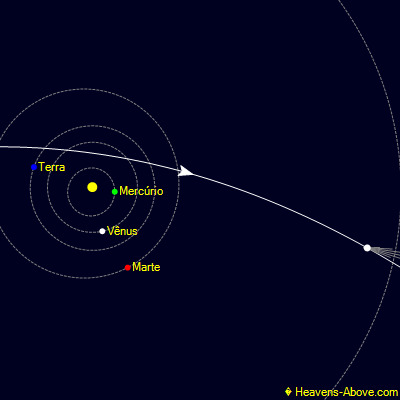
10 de Março de 2024: Ocultação Lunar de Netuno (14:54 - 18:44)
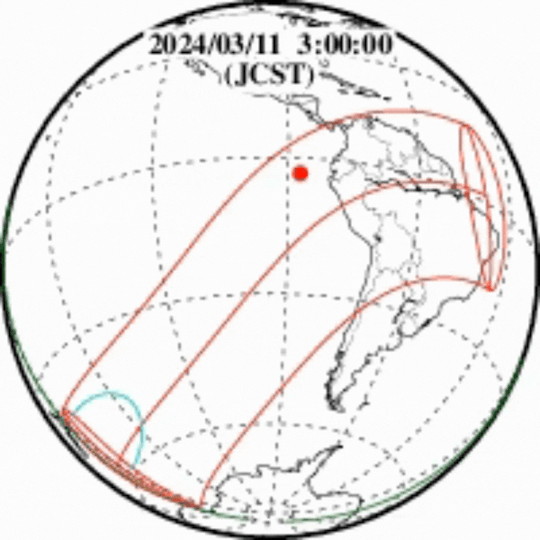
16 de Março de 2024: Ocultação Lunar de Beta Tauri (15:31 - 19:29)
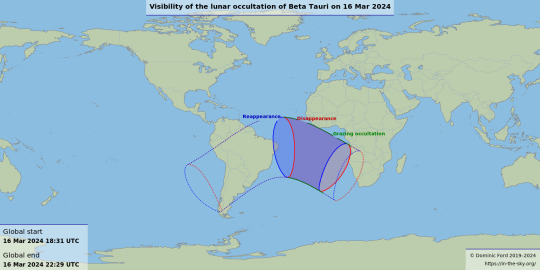
24-25 de Março de 2024: Eclipse Lunar Penumbral

31 de Março de 2024: O cometa 12P/Pons-Brooks (mag 6.5) passa perto de Hamal (mag 2)
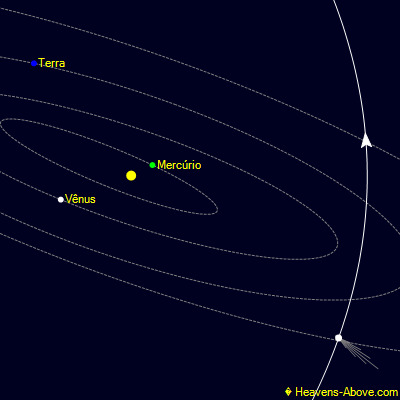
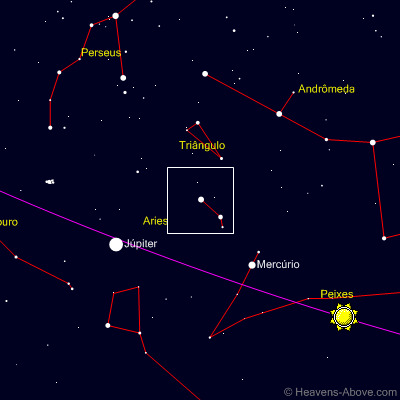
0 notes
Text
Un nuovo evento di perturbazione mareale scoperto dagli astronomi cinesi
In alto a sinistra: Immagine in banda g di LCOGT ripresa il 2023-02-26 UT. In alto al centro: Immagine PanSTARRS in banda g della galassia ospite. In alto a destra: Immagine differenziale di AT 2023clx. Al centro: curve di luce sottratte della galassia ospite di AT 2023clx nelle bande UV e ottica. Gli astronomi dell’Università della Scienza e della Tecnologia della Cina di Hefei riferiscono la…

View On WordPress
0 notes
Photo

Comet PanSTARRS
#Astronomy#NASA#Night#Sky#Stars#Space#Science#Universe#Cosmos#Cosmic#Solar System#Comet#PanSTARRS#Nebula#Galaxy#Constellations#Constellation#Rainbow#Bright
1K notes
·
View notes
Photo

Comet PanSTARRS & Helix Nebula by Fritz Helmut Hemmerich
#nebula#space#nasa#astronomy#astrophotography#stars#comet#panstarrs#helix nebula#night sky#universe#planet#cosmos#planets#galaxy#solar system
1K notes
·
View notes
Photo
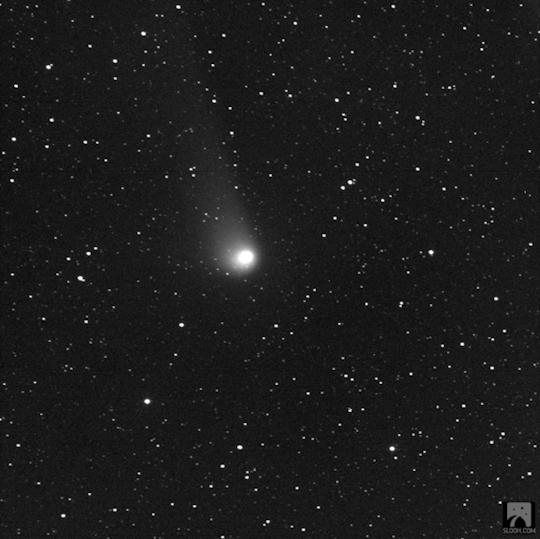
This is Comet PanSTARRS! 🌠🌠🌠
This gif was created throughout the night of July 25th and you can see the potentially interstellar comet in motion.
Taken by me (Michelle Park) using the Slooh Canary One telescope on July 25th, 2022.
#astroimages#astro#astronomy#astrophysics#universe#space#telescope#telescopes#astrophotography#photography#comet#comets#comet panstarrs#panstarrs#nightsky#night#cosmos#star#stars#slooh#slooh canary one telescope#canary one telescope
95 notes
·
View notes
Photo

Moon, Venus and Comet PanSTARRS
#Venus#Moon#Comet PanSTARRS#PanSTARRS#nasa#stargazing#astrophoto#astrophotography#galaxy#astronomy#universe#space#nebula#spinningblueball#thespinningblueball#milky way#milky way galaxy#milkywaygalaxy#spacephotography#nightsky#starrynight#milkywayphotography#astrophotos#starscape#star#cosmos#telescope#hubble#chandra#spitzer
390 notes
·
View notes
Link
Two recent asteroid discoveries made by an amateur astronomer highlight what is possible, with access to the right equipment.When it comes to hunting for new astronomical discoveries these days, the competition is stiff. Gone are the days of the lone astronomer with a telescope perched on a lonely hilltop, patiently sweeping the skies looking for something new and out of place.These days, it’s the ‘robotic eyes’ of all-sky surveys are more likely to make astronomical discoveries. Tirelessly canvassing the sky from dark locales night after night, these sentinels have definitely won the war when it comes to new discoveries. You’re more likely to see a survey name like ‘ATLAS’ or ‘PanSTARRS’ on a new comet today than say, ‘Johnson’ or ‘Smith’.As of writing this, there are close to 624,000 numbered asteroid discoveries and counting. This goes back to 1 Ceres, discovered by Giuseppe Piazzi on the first night of the 19th century. While comets are named after their discoverers, the rights for naming asteroids goes to the discoverer, though these also need final approval from the International Astronomical Union.A Tough (But Not Impossible) Search That’s not to say that there aren’t still discoveries to be made. Increasingly, amateur astronomers are simply moving their efforts online. Remote telescopes offering observing time worldwide are now becoming available. A pair of recent asteroid discoveries made by amateur astronomer Filipp Romanov highlights this trend. Universe Today caught up with Filipp recently, to find just how he did it.“Currently, in astronomy, many asteroids have already been discovered, for example, bright or close to Earth,” Filipp Romanov told Universe Today. “But among minor planets fainter than +20th apparent magnitude, unknown ones can still be found. For an amateur astronomer, this is difficult to do due to the fact that large automatic sky surveys constantly monitor the sky and often find new objects.”Amateur astronomer Filipp Romanov.To that end, Romanov took an ‘if you can’t beat ‘em, join ‘em’ approach.“In 2022, I got a few hours of observing time (for my astrometric measurements of comets and asteroids) at the two-metre aperture robotic Liverpool Telescope (LT) located on the island of La Palma (in the Canary Islands).”A Cosmic Quest Hits Paydirt“At the end of October-beginning of November 2022, I tried to search for asteroids using the LT (Liverpool Telescope); I found two asteroids in the resulting images for which the Minor Planet Checker showed no matches with known asteroids. I observed them for a few days, but then there was updated information that they were already known.”It happens. The data was still useful to refine the known asteroids’ orbits. Undeterred, Romanov continued his search.“Before the November 2022 New Moon, I continued to search for asteroids. I had chosen the areas of the sky near the ecliptic and in the opposition region.” This region tends to be prime hunting grounds for new asteroids, as they’re at their brighest and closest to the Earth. These areas also hadn’t been recently covered by ongoing sky surveys, which Romanov found in the MPC’s Sky Coverage Plots database.“On November 23rd, 2022, two fields of 10 by 10 arc minutes were photographed, and on one of them I found an unknown asteroid which I designated as RFD0004, and on a second field I found an asteroid, RFD0004. I made astrometric measurements and sent my data to the Minor Planet Center.”Confirming New Discoveries “I calculated (using the New Object Ephemeris Generator) where the asteroids will be in the sky in a day, and on November 24, 2022, I received new photographs of the requested areas of the sky. I found RFD0004 again but I didn’t find RFD0005, but I found another asteroid, RFD0006.”Tracking the asteroids in their orbits around the Sun is key to identification as something new. “I continued to track these asteroids for a month, and in December 2022 these asteroids received provisional designations in the Minor Planet Center database: RFD006 was designated 2022 WY16, and RFD0004 was 2022 WY17.” Both asteroids were at about +21st magnitude at the time of discovery.Confirming a discovery, however, can often take months, sometimes years. Objects often get lost in the glare of the Sun, or become too faint to recover as they move away from the Earth. “Assigning permanent designations (numbers) to minor planets occurs when their orbits are well known,” says Romanov. “But in the case of these asteroids, they were found in archival images of sky surveys (in this case, the Sloan Digital Sky Survey, going back to 2002) and this made it possible to increase their observation arcs.”Discovery images for asteroids 2022 WY17 and 2022 WY16. Credit: Liverpool Telescope/Filipp RomanovThese discoveries along with others were then released in the July 2023 Minor Planet Center Circular. These are the first asteroids discovered by Romanov, and the first asteroids discovered by the Liverpool Telescope.Naming AsteroidsFinally, it came time to name the asteroids. “Numbered asteroids can be named, and in July 2023 I proposed—to the Working Group Small Bodies Nomenclature (WGSBN) committee of the International Astronomical Union—naming these asteroids in honor of my great-grandfathers.”The asteroids found by Filipp Romanov are:2022 WY16 is now 623826 Alekseyvarkin, named after the discoverer’s great-grandfather Aleksey Makarovich Varkin, who was wounded in World War II while rescuing horses, and later decorated for the act of heroism.The orbit of asteroid 623826 Alekseyvarkin. Credit: NASA/JPL.On a 4.4 year orbit around the Sun, 623826 Alekseyvarkin is a main-belt asteroid, and a member of the Eunomia family of asteroids. Another well-known possible member of the family is asteroid 162173 Ryuku, visited by JAXA’s Hayabusa-2 mission in 2018 and 2019.Next, 2022 WY17 is now 623827 Nikandrilyich, named after the discoverer’s great-grandfather Nikandr Ilyich Romanov, who served as a military veterinarian and later a foreman.On a 5.78 year orbit, asteroid 623827 Nikandrilyich is an outer main-belt asteroid.An Impressive Amateur Astronomer ResumeFilipp observes from far eastern Russia in Nakhodka. This unique locale often fills coverage in a needed longitude gap when it comes to observers worldwide. At age 26, he is self-educated in astronomy. Filipp is the discoverer of 81 variable stars, 3 novae, 2 supernovae, 4 binary stars, and now, 2 asteroids. Not bad.A recent Starlink satellite train pass over Nakhodka. Credit: Filipp Romanov.Romanov has a passion for astronomy, and his path serves to inspire anyone out there to ‘just do it.’“I, my mother and our 18-year old cat are now in the same locality Yuzhno-Morskoy (in my small homeland) near the city of Nakhodka, in the housing of my old grandparents where I independently (based on self-education) make my discoveries in astronomy as an amateur astronomer. I love to study and popularize the science of astronomy, and plan to study as an astronomer at university in the near future in order to make even greater contributions to the science of astronomy.”Supernova SN 2023ixf in the Pinwheel Galaxy Messier 101. Credit: Filipp Romanov.A New Generation of Astronomical DiscoveryAn amazing story, for sure. And there’s more to come. All-sky surveys such as the Vera Rubin Observatory will come online in early 2025. Vera Rubin promises to scour the sky several times a night down below +21st magnitude. These surveys will produce a fire hose of images for anyone with an internet connection to scour though. The time for online sleuths to hunt for asteroids and comets has never been better.Naming a space rock offers a small bit of immortality, out in the depths of the solar system. You can imagine asteroid miners in a future straight out of The Expanse, approaching a prospective space rock. They may wonder just where its obscure name came from as it looms ahead. Fraser (the publisher of Universe Today) has an asteroid, 158092 Frasercain, as do several names in the online skeptical community. As of writing this, I have yet to have the honor, but you just never know…Congrats to Romanov on his surreptitious discoveries, and here’s to more to come!-Follow Filipp on Flickr, YouTube and his own live journal. The post Dedicated Amateur Astronomer Makes Rare Pair of Asteroid Discoveries appeared first on Universe Today.
1 note
·
View note
Photo

456P/PANSTARRS: New Rare Comet Confirmed In The Main Asteroid Belt
0 notes
Text
Night sky highlights for March 2024
Check out the night sky this month, March 2024. Here are videos highlighting the top sights to observe. ** What's Up: March 2024 Skywatching Tips from NASA - NASA JPL What are some skywatching highlights in March 2024? Jupiter plows through the Pleiades on March 14, a chance to spot Mercury at month's end along with a subtle lunar eclipse, and a comet worth keeping an eye on! 0:00 Intro 0:12 Moon & planet highlights 0:51 Penumbral lunar eclipse 1:47 Comet 12p/Pons-Brooks 1:23 March Moon phases Additional information about topics covered in this episode of What's Up, along with still images from the video, and the video transcript, are available at https://solarsystem.nasa.gov/skywatch.... https://youtu.be/BRlZlw1xw3A ** Tonight's Sky: March2024 - Space Telescope Science Institute - Tonight's Sky In March, the stars of spring lie eastward: Look for the constellations Gemini and Cancer to spot interesting celestial features like star clusters M35 and the Beehive Cluster, and NGC 3923, an oblong elliptical galaxy with an interesting ripple pattern. Keep watching for space-based views of the galaxies. https://youtu.be/1tBzl8SAytE ** What to see in the night sky: March 2024 - BBC Sky at Night Magazine Pete Lawrence and Paul Abel reveal what's in the sky this month, including Jupiter, the Moon, Comet C/2021 S3 PANSTARRS and a tour through Coma Berenices and the Bowl of Virgo. 00:00 Intro 00:15 Inner planets 03:56 Jupiter and Saturn 04:40 Uranus and Neptune 05:50 Juno 05:58 The Moon 11:40 Comet C/2021 S3 PANSTARRS 12:05 Constellations 16:00 Leo Triplet 17:50 Coma Berenices 21:05 Bowl of Virgo https://youtu.be/jKeez88IdGg ** Sky & Telescope's Sky Tour Podcast – March 2024 | Sirius and the Moon Phases - Sky & Telescope Youtube https://youtu.be/_glU2ImP3IE See also - Sky Tour Astronomy Podcast: Upcoming Celestial Events | Sky & Telescope - This Week's Sky at a Glance, March 1 – 9 | Sky & Telescope - Fuzzy Glows: See Zodiacal Light, Gegenschein, Airglow, and Aurorae | Sky & Telescope ** What's in the Night Sky (March 2024) Comet 12P/Pons-Brooks - Alyn Wallace https://youtu.be/rzJKp7Yh9dg ** Night Sky Notebook March 2024- Peter Detterline https://youtu.be/W18Iv0KLn28 ** See also: - Sky This Month: March 2024 | Astronomy.com - March 2024 Night Sky Calendar | Voyageurs Conservancy - Night Sky for March 2024: Visible Planets, Bright Stars | Almanac.com - Night Sky Map for March 2023: The Big Dipper | The Old Farmer's Almanac - Night sky, March 2024: What you can see tonight | Space.com - The Night Sky in March 2024 | Day By Day Astronomy Events | Starlust.org === Amazon Ads === Celestron 70mm Travel Scope Portable Refractor Telescope Fully-Coated Glass Optics Ideal Telescope for Beginners BONUS Astronomy Software Package == Stellaris: People of the Stars Read the full article
0 notes